How to Sharpen a Knife
With a Japanese Whetstone?
Knives are popularly and commonly used as an all-purpose device for multiple activities. While during primitive times, knives made of stone were used, present-day knives comprise mostly of stainless steel or carbon steel. Knives have evolved a lot with time but one fact that remains common in any good knife is sharpness. A sharp knife by your side is always a beneficial tool. Right from performing the prime cutting and chopping jobs to adding ease and speed to your cutting tasks, knives are revered as the most essential tools of any kitchen. But what if your knife is not sharp enough to perform the job they are meant for? Well that would be pretty disappointing, right?
Not anymore! The same stone that was used in early historical times for creating knives can be used for sharpening current steel knives. Whetstones are considered the best knife sharpening tool for all kinds of steels and knife materials.. Especially, a Japanese whetstone is known as one of the best whetstones for sharpening knives. It is softer in comparison to other whetstones and this property enables the Japanese whetstone to create sharp edges quickly. The Japanese whetstones work gently on knives, making them sharper without any sort of damage. Let us dig a bit deeper and understand the whetstones closely.
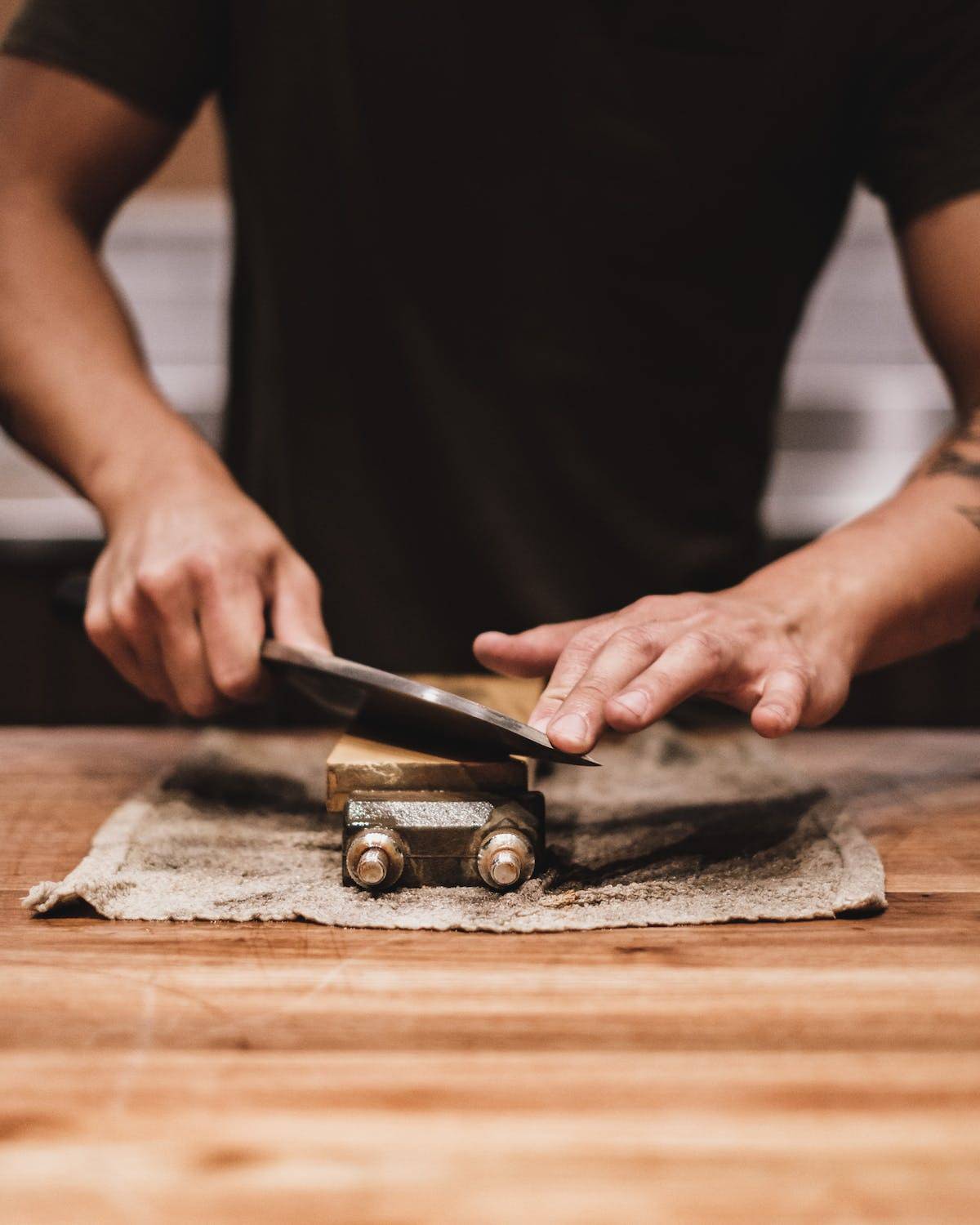
What is whetstone?
Whetstones are naturally formed stones out of quartz. Sourced from the Ouachita Mountains in Arkansas, they are globally used as a sharpening stone. These stones have a steeper curve better than any other sharpening tool. Therefore, they are known to offer better control and precision in terms of knife sharpness.
These sharpening stones are known to use water or oil for the sharpening process. This is done to offer better lubrication to the stone surface and eliminate all sorts of extraneous friction for improved sharpening power.
Whetstones- better sharpening tool than another sharpener
There are several sharpening tools capable of infusing the right sharpness to dull blades. However, top professional chefs and food experts consider the whetstone as the best knife sharpening tool for all kinds of knives.The tried and tested Japanese whetstone is used for sharpening, polishing, and repairing kitchen knives. While the whetstone quarries are scattered all over the world, Japan is known for providing the best quality whetstones. Like most of the other whetstones, Japanese whetstones are also cut from sedimentary rocks. However, the sources rocks of Japanese whetstones have a unique combination comprising fine grain silicates and clay. The Japanese whetstones are mainly sourced from Kyoto (the Narutaki district).
Points to consider for sharpening your knife on a Japanese whetstone
If you are planning to use a Japanese whetstone to sharpen your knife, you must know about certain , significant points so that you do not damage your knives and achieve the sharpness results as per your expectation. Take a quick glance at the factors you need to consider while sharpening your knives using a whetstone.
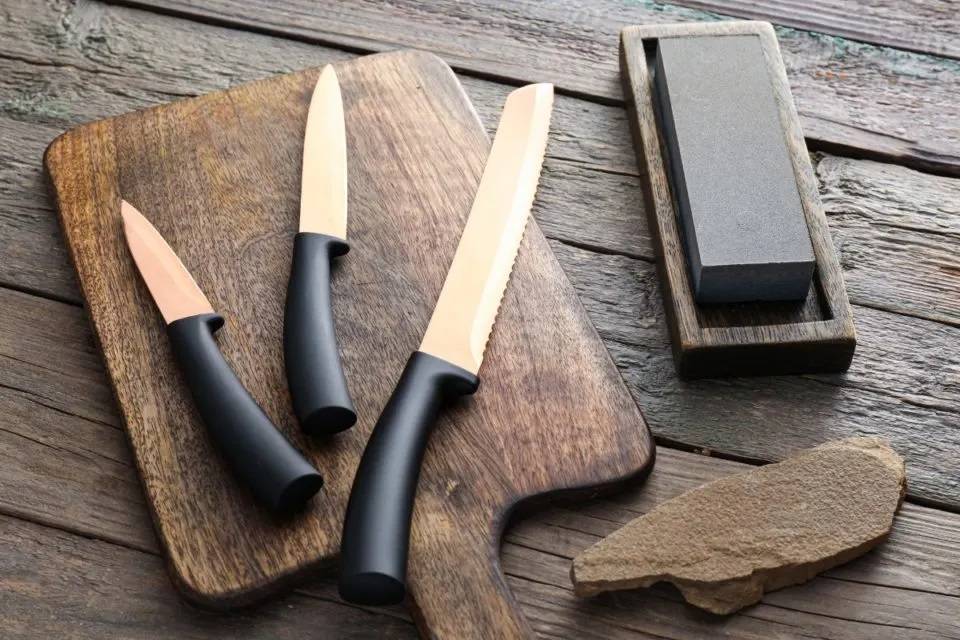
Time duration: Ideally, one should know the right duration to sharpen your knife on the whetstone. In order to make your knife relatively sharp, all you need is just five or ten minutes of sharpening against the stone. However, for an extremely dull knife, you might require comparatively more time.
Alignment: Push or pull Keep in mind to slightly push the knife point that you wish to get sharpened. Use your fingers for the same purpose. Keep the angle and push aligned with the point of your fingers, and carry on the strokes of the blade till it reaches one edge of the whetstone, and keep repeating the process in a back-and-forth pattern. It is important to mention that here one set of back-and-forth motions is counted as one stroke.
Angle to follow: The angle at which pressure is applied tends to be very important. Therefore, you must know the right angle for applying pressure on your knife. For a Japanese knife, 15 degrees angle is good to go while 20 degrees is fine for a German or French blade.
Number of swipes: Swiping your knife slowly down the whetstone in a direction away from you will make wonders while sharpening. However, approximately five swipes on every side are enough to sharpen your tool. However, if you are trying to figure out as to how many times should you go back and forth, at least 10-15 times of back-and-forth movement is good to go with the right pressure applied.
Side to choose: Whetstones generally have a coarse and fine side. It is always recommended to start from the coarse side first and then go to the finer one. Water and oil whetstones are highly preferred as they are more convenient and give a faster knife-sharpening experience.
Type to choose: Japanese whetstones are available in numerous varieties. You can find both natural and synthetic Japanese whetstones. It is important to mention that natural whetstones are considered better than synthetic ones. Also, a Japanese whetstone can be found in different grades ranging from 100 to 30,000. Remember, the greater number in a Japanese whetstone indicates greater density and finer particles.
Alignment: Push or pull Keep in mind to slightly push the knife point that you wish to get sharpened. Use your fingers for the same purpose. Keep the angle and push aligned with the point of your fingers, and carry on the strokes of the blade till it reaches one edge of the whetstone, and keep repeating the process in a back-and-forth pattern. It is important to mention that here one set of back-and-forth motions is counted as one stroke.
Angle to follow: The angle at which pressure is applied tends to be very important. Therefore, you must know the right angle for applying pressure on your knife. For a Japanese knife, 15 degrees angle is good to go while 20 degrees is fine for a German or French blade.
Number of swipes: Swiping your knife slowly down the whetstone in a direction away from you will make wonders while sharpening. However, approximately five swipes on every side are enough to sharpen your tool. However, if you are trying to figure out as to how many times should you go back and forth, at least 10-15 times of back-and-forth movement is good to go with the right pressure applied.
Side to choose: Whetstones generally have a coarse and fine side. It is always recommended to start from the coarse side first and then go to the finer one. Water and oil whetstones are highly preferred as they are more convenient and give a faster knife-sharpening experience.
Type to choose: Japanese whetstones are available in numerous varieties. You can find both natural and synthetic Japanese whetstones. It is important to mention that natural whetstones are considered better than synthetic ones. Also, a Japanese whetstone can be found in different grades ranging from 100 to 30,000. Remember, the greater number in a Japanese whetstone indicates greater density and finer particles.
Important Info One Must Know While Planning to Use a Whetstone
If you are going to use a whetstone for sharpening your knives for the first time, it is important to know some crucial points related to it. Before you start using your whetstone, you should always soak it in water. . Different Japanese whetstones have different porous capabilities. Hence, the soaking time of a Japanese whetstone can differ from 30 minutes to even 24 hrs. Fine grit whetstones are ready to use post just a few minutes of soaking; however, some chefs even avoid soaking fine grit whetstones to avoid any stone cracking risk. On the other side, coarse grit whetstones must be soaked for at least 15 to 20 minutes before use.
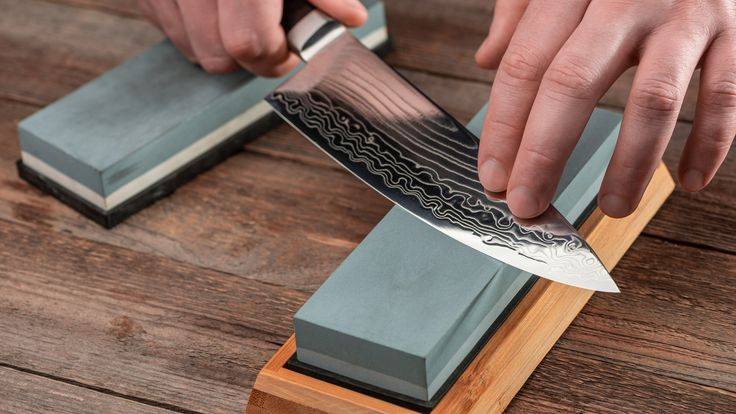
Once the stone is soaked enough, you can place it over your kitchen top over a cloth to avoid soiling your space and start the process. Most of the knives need chiseling on both sides. However, the Japanese single-beveled knives need to be sharpened only on one side. First, use the coarse whetstone followed by the finer grit whetstone. It is very crucial to use your whetstone for sharpening at the correct angle.
In the following, we will be discussing a step-by-step procedure to be followed for sharpening your knife like a pro.
How to use a Whetstone for sharpening your professional Japanese knife set?
There are numerous varieties of whetstones available in the market to be used as a sharpening tool. Each one is different from the others. Hence, it is very important to follow individual instructions and guidelines to use each one of them.
However, here is a step-by-step guide for the same
- Analyse your knife: Before you start the sharpening process, assess, and analyze your knife’s current sharpness. Your duller knives need both coarse and fine grit sharpening; nevertheless, less dull knives will only require fine grit sharpening.
- Soak your whetstone: It is recommended to soak your coarse grit whetstone for at least 15 to 20 minutes and fine grit whetstone for at least 5 minutes before beginning the sharpening process.
- Remove the whetstone from water or oil and place it on a cloth: Once your soaking is done, remove your stone and place it on a cloth over your kitchen top. Make sure to place it at a viable place where you can use it at the right angle for sharpening correctly.
- Begin sharpening, drag the tip toward you: Place your knife at an angle that goes diagonally on your whetstone. Makes sure the knife tip is at the top-left corner of the whetstone while sharpening. Keep the knife heel towards the bottom-left corner. Use two fingers to hold the knife at the tip while holding the rest of the knife at a 20-degree angle. Use firm and constant pressure while dragging it towards you.
- Release the pressure, repeat: Each time you move your knife back and front, release the pressure and repeat the step again with even pressure. You will see your knife getting sharpened.
- Repeat the strokes: Keep repeating the sharpening strokes for around 10 mins on each side. 40-50 strokes are good enough for duller knives while 10 strokes for a slightly blunt knife is fine.
- Turn and repeat: As one side of the knife is sharpened, it is time to flip your knife and repeat the process on the next side for removing the burr. But this time there is a slight change. Place your knife tip towards the bottom right corner of your stone and keep dragging your knife away from you. Release the pressure gently and repeat. Make sure you are following the process at a maintained angle and dragging it away from you.
- Repeat the strokes: Keep repeating your strokes in this process until you feel the sharpness.
- Wash and dry: Now, it is time to wash and dry your knife to remove any silty water or worn-out metal particles from your tool. Test your knife’s sharpness carefully and if it’s good to go, you are done with your sharpening. The edge should be sharp enough to easily slice through a tomato or a piece of paper.
This is how you can easily use your whetstone to sharpen your knife and enjoy a seamless cutting experience in your daily cutting, chopping, and slicing needs.
Storing and caring for your Whetstones
In order to clean your whetstone, all you have to do is put it under running water to remove any sediment formed. Later dry it with a paper towel, and make sure it is completely dry prior to storing it. Storing it away from extremely high temperatures at a dry location is preferable.
Final Words: Like every other object, whetstones also have their own benefits and loopholes. However, in comparison to other knife-sharpening tools, Japanese whetstone is more beneficial. Offering significantly high-angle control for better sharpness, the sharpening mechanism of this stone is more precise and delicate. Less likely to cause any damage to your knives, they only shave off a very minimal amount of metal from your knife. Nevertheless, you need to be a little more disciplined when it comes to the maintenance of the whetstone. Also, you need to soak it before use. Following these simple tips, you are likely to validate the point why whetstones are the globally preferred sharpening tools for knives.

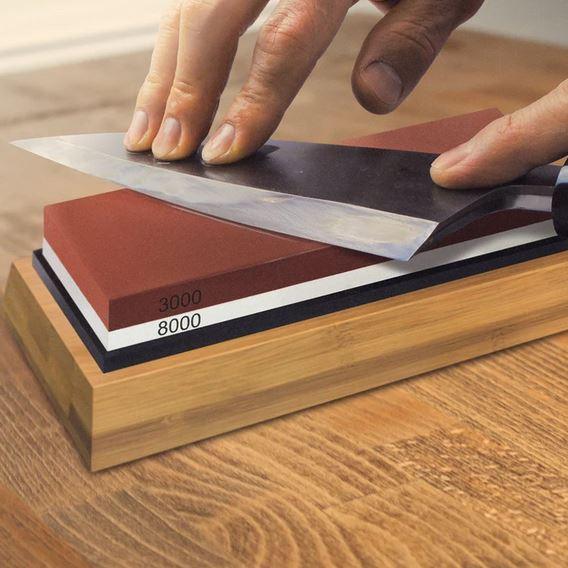
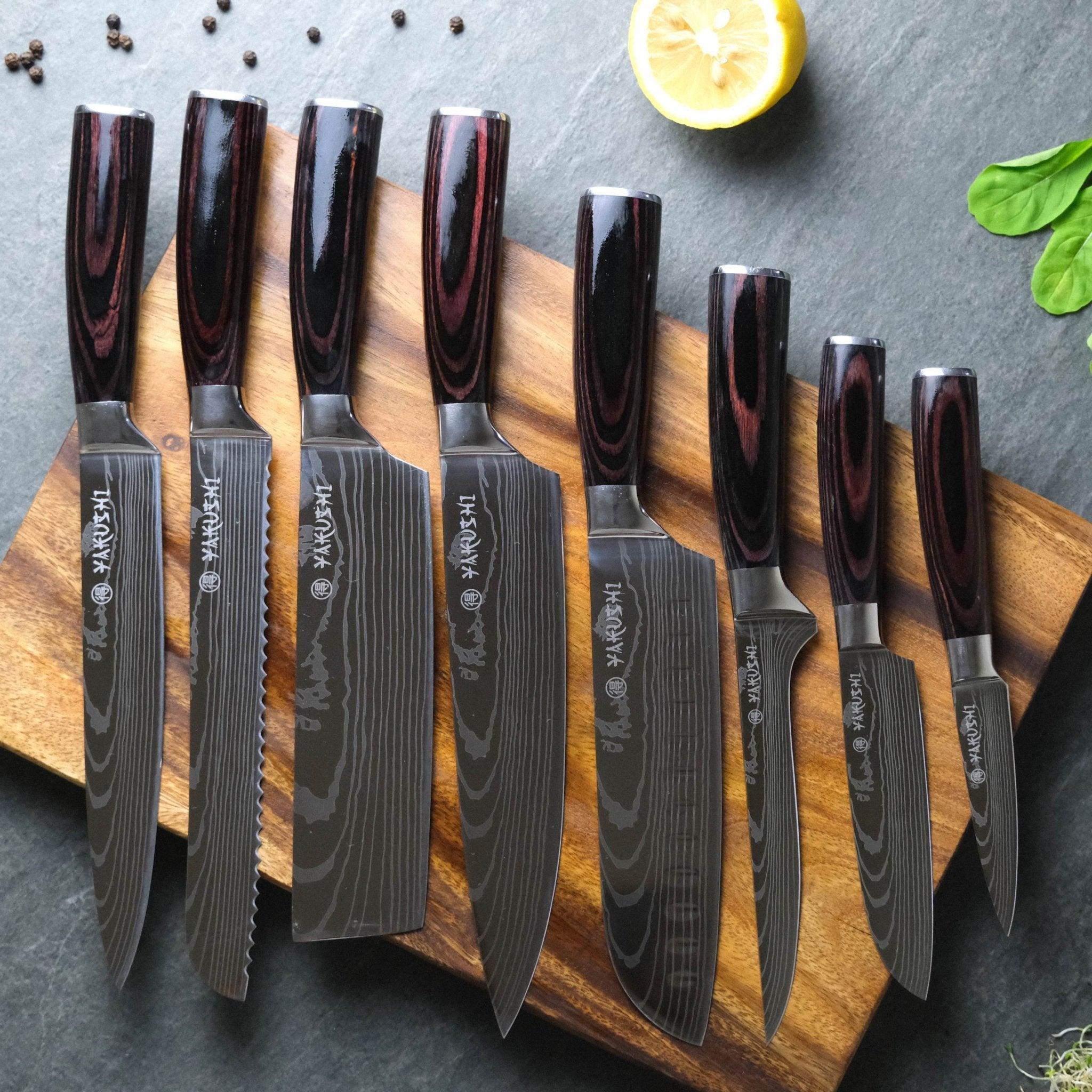
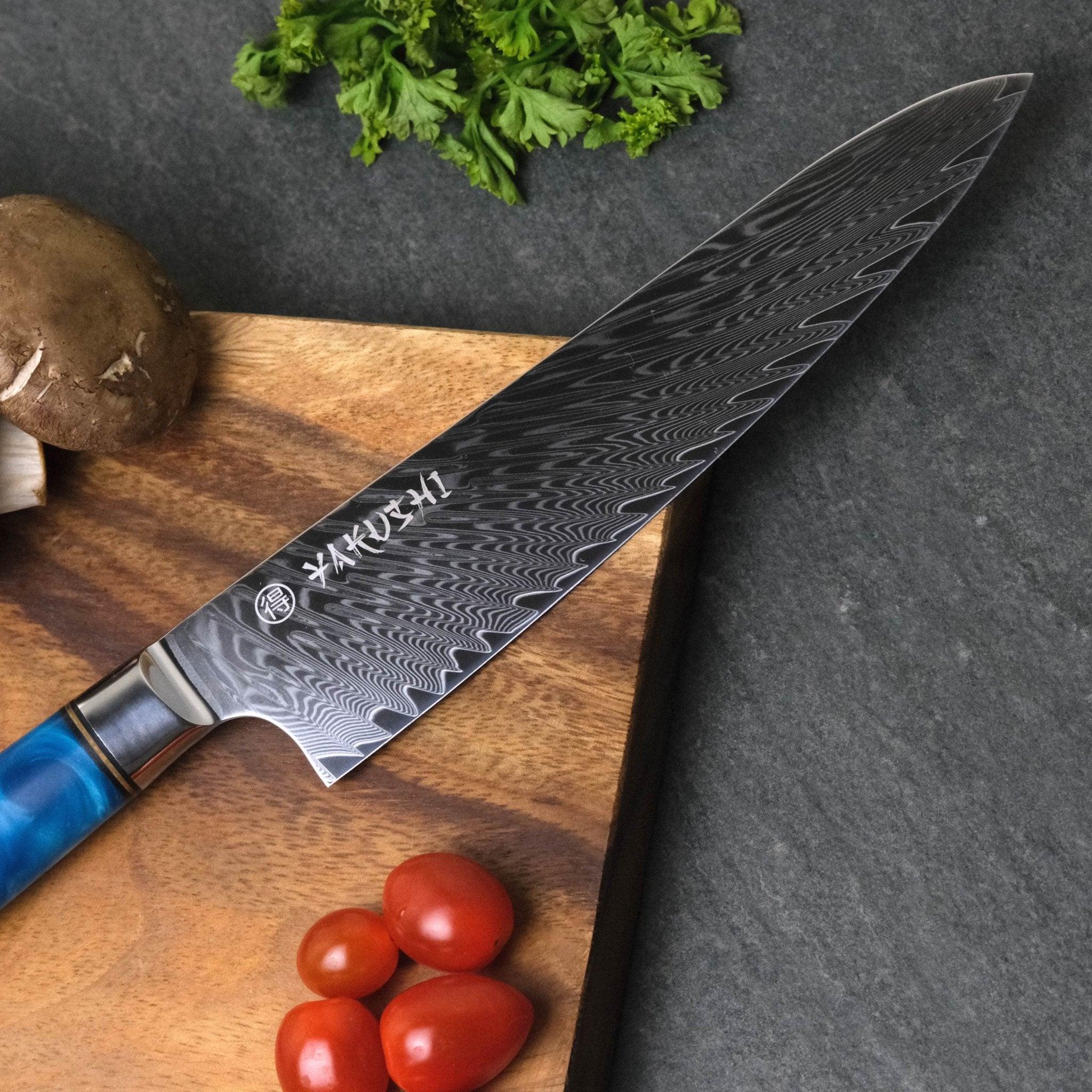
Leave a comment
This site is protected by hCaptcha and the hCaptcha Privacy Policy and Terms of Service apply.